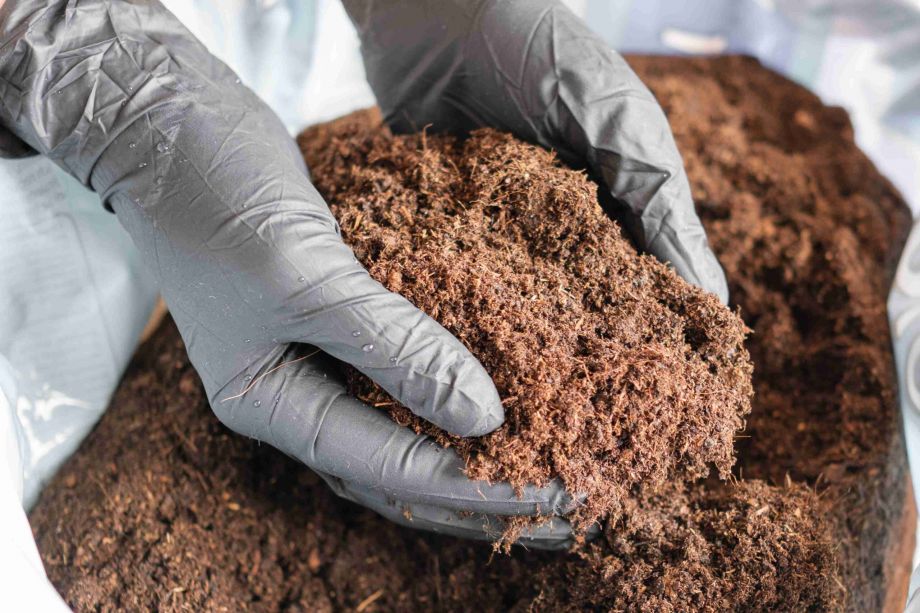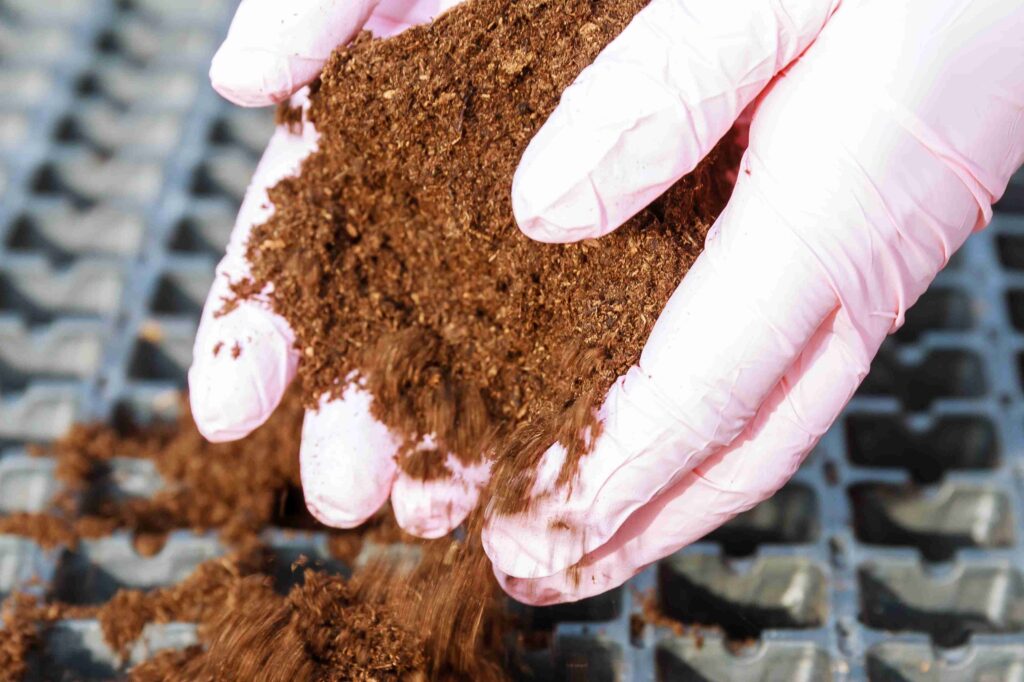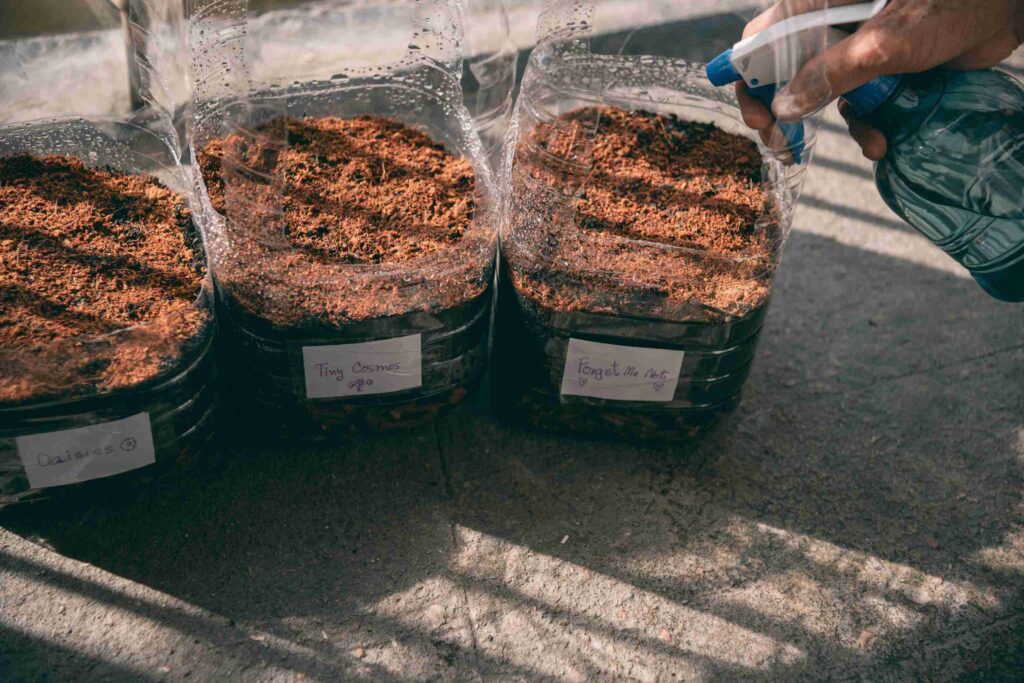
How Much Peat Moss Do I Need? (Guide)
Ever stood in the garden supply aisle staring at those giant bales of peat moss, wondering how much you actually need?
You’re not alone. Peat moss can be a bit deceiving since it’s super light and expands a lot once it’s fluffed up, which makes estimating tricky.
The good thing is, figuring it out isn’t as complicated as it seems.
Once you know what area you’re covering and how deep you want the layer, you can easily calculate the right amount.
In this post, we’ll break down how much peat moss you need.
Calculating How Much Peat Moss You Need
Before we talk about anything else, let’s go over how to calculate the amount. You need to know how many cubic feet of peat moss to get. Most bags are labeled that way.
Here’s the quick math:
Length (ft) × Width (ft) × Depth (ft) = Cubic Feet.
Let’s say your garden bed is 10 feet long and 5 feet wide, and you plan to add 2 inches of peat moss. Convert that 2 inches into feet (2 ÷ 12 = 0.17 ft).
Then multiply:
10 × 5 × 0.17 = 8.5 cubic feet.
That means you’ll need about one large 9 cubic foot bale. Easy, right?
A little tip: always round up slightly. Peat moss is fluffy, and it settles when you spread or mix it. Having a bit extra is way better than running out halfway through.
Also Read: Peat Moss For Bare Spots
How Much Peat Moss For Garden Beds
If you’re working on a garden bed, peat moss is amazing for loosening compacted soil and improving water retention.
It helps roots stretch deeper and keeps the soil moist longer, especially in hot climates.

For most garden beds, you’ll want to add 2 – 3 inches of peat moss over the surface, then mix it into the top 6 – 12 inches of soil.
This gives your plants a soft, breathable base without drowning them.
Let’s run through a few examples:
- A 4×4 foot raised bed at 2 inches deep = about 2.7 cubic feet of peat moss
- A 10×10 foot garden area at 2 inches deep = about 17 cubic feet
- A 20×20 foot garden at 3 inches deep = around 100 cubic feet
It might sound like a lot, but peat moss compresses easily. If your soil is heavy clay, lean toward the higher end of that range.
For loamy or sandy soil, 2 inches is plenty.
Spread the peat moss evenly, then grab a shovel or garden fork and turn the soil. Don’t just leave it sitting on top – your plants’ roots need that fluffy texture down where they grow.
Also Read: Can You Use Garden Soil For Grass?
How Much Peat Moss For Lawns
When it comes to lawns, peat moss is usually used as a top dressing or for seeding. It keeps the grass seed moist and helps it germinate faster.
You don’t need much for lawns, a thin layer is enough.
For lawns, stick with ¼ to ½ inch of peat moss spread evenly. That’s enough to help your soil without suffocating your grass.
Here’s what that looks like in real life:
- 1,000 sq ft lawn at ¼ inch depth = about 20 cubic feet of peat moss.
- 1,000 sq ft lawn at ½ inch depth = about 40 cubic feet.
If you’re overseeding, apply the peat moss right after scattering the seeds. It’ll lock in the moisture and protect the seed from drying out in the sun. A light raking afterward helps settle everything.
Avoid piling it up as it should be just enough to cover the soil lightly.
If it looks like a blanket, it’s too thick.
How Much Peat Moss For Containers And Potting Mixes
For containers, it’s less about surface area and more about ratios.
Peat moss is one of the main ingredients in most potting mixes because it helps keep moisture even and provides a soft, airy texture for roots.
Also Read: Will Gas Kill Grass?
The general rule: use ⅓ to ½ peat moss in your potting mix.
So, if you’re mixing your own soil:
- Combine 1 part peat moss, 1 part compost, and 1 part perlite or vermiculite.
For example, if you’re making 10 gallons of potting mix, you’ll use around 3 – 5 gallons of peat moss.

This ratio works for most houseplants, flowers, and vegetables. For plants that love moisture (like ferns or begonias) go closer to the half-and-half ratio. For succulents, cut back and use more sand or perlite instead.
Remember to moisten the peat moss before mixing it into your containers. It’s naturally dry and can be hydrophobic (meaning it resists water at first).
So sprinkle it with water, stir it around, and give it a few minutes to soak.
Tips To Avoid Overusing Peat Moss
Using peat moss can make your soil soft, airy, and moisture-friendly, but too much of it can actually backfire. When overused, peat moss can hold too much water, block airflow, and make your soil too acidic for certain plants.
Here’s how to get the benefits without going overboard.
- Mix peat moss evenly into the soil instead of leaving it in thick layers on top.
- Combine it with compost or garden soil to add nutrients peat moss doesn’t provide.
- Check soil pH occasionally since peat moss tends to lower it over time.
- Use it mainly to improve texture, not as a main growing medium.
- Always moisten peat moss before adding – it expands and mixes better that way.
- Consider swapping in eco-friendly alternatives like coconut coir sometimes.
Bottom Line
Peat moss is an amazing tool for improving soil, helping seeds sprout, and keeping your plants healthy. But figuring out how much you need doesn’t have to be confusing.
It all comes down to a simple formula and understanding your space.
For garden beds, 2 – 3 inches mixed into the top layer does wonders. For lawns, keep it light at about ¼ to ½ inch. And for containers, aim for ⅓ to ½ of your potting mix.
Once you know those numbers, the rest is easy.
Measure your space, do a quick calculation, and grab a bag or two. Then get your hands dirty and let the soil magic begin.
FAQs
How Much Peat Moss Do I Need Per Acre?
A 1-inch layer over one acre requires about 135 cubic yards of peat moss. If you want a 2-inch layer, plan for around 270 cubic yards, depending on soil type.
How Much Peat Moss Do I Need Per Square Foot
For a 1-inch layer, you’ll need roughly 0.083 cubic feet per sq ft. A 2-inch layer doubles that to 0.167 cubic feet per sq ft, perfect for mixing into garden beds.
How Much Peat Moss Do I Need For Overseeding
Apply a thin ¼–½ inch layer over the lawn to protect seeds and retain moisture. For 1,000 sq ft, that’s about 20 – 40 cubic feet, spread evenly.
How Much Peat Moss For 1,000 Square Feet
For ¼ inch deep coverage, use around 20 cubic feet; for ½ inch, use 40 cubic feet. Light, even spreading works best to avoid smothering grass or seeds.
How Much Peat Moss Do I Need For Blueberries
Mix 1 part peat moss with 1 part soil in each hole or work 2–3 inches into the top 8 – 12 inches of a blueberry bed. This keeps the soil acidic and drains well for healthy plants.








